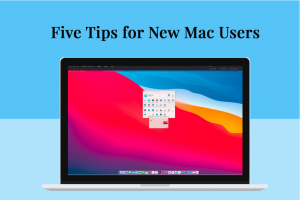Mobile apps have completely changed how companies interact with their clientele in the cutthroat food market. Mobile apps are now necessary to create a convenient and effective customer experience, from ordering and menu browsing to tracking delivery and giving reviews. App localization are essential for food businesses looking to expand internationally since they help remove linguistic and cultural hurdles that could otherwise impede their expansion.
The Importance of App Localization Services for Food Businesses
Changing a mobile application according to the linguistic, cultural, and regional preferences of consumers in various geographic locations is done by app localization services. This is especially important for food businesses because it enables them to display their menu items and brands in ways that are appealing, recognizable, and pertinent to each target demographic.
App localization makes sure that users from different areas can interact and use the app with ease by altering components such as language, graphics, currency, and even measures. Localized applications have a significant impact on food businesses where dietary requirements and preferences vary greatly by enabling them to connect with a wide range of tastes throughout the world and attract new clients.
Art of Food Localization
In the food industry, localization is more than just translation; it's an adaptation process that takes into account each target audience's unique nutritional needs, cultural quirks, and local tastes. Basic information may be conveyed via a literal translation, but important elements such as the popularity of an ingredient, regional dietary customs, and enticing descriptions that suit local tastes may be lost.
To accommodate local eating customs, a dish that is popular in one nation might need to be prepared differently or with different ingredients in another. Additionally, localization helps guarantee that messages are considerate of cultural taboos, encouraging tolerance and respect.
User engagement and brand loyalty are immediately increased by this customized strategy. Users are more likely to return, place further orders, and even refer the app to others when they believe it understands their preferences and dietary requirements. Food businesses may stand out in a crowded market and establish their brand in every new region they enter by investing in app localization, which enables them to interact with clients on a personal level.
How to Implement App Localization in the Food Industry
Let's see how companies can go for app localization in the food industry.
- Perform market research to identify high-potential languages and target regions to increase engagement and reach. Moreover, consider regional and cultural food preferences so that your food company can add dishes to the menu according to the customer's preferences.
- Collaborate with a professional translation company to guarantee precise, culturally appropriate translations that improve the user experience. Professional localization services offer specific knowledge of how to modify material for regional languages, idioms, and cultural allusions. This strategy is essential to making sure your app's UI, descriptions, and food-related terms seem engaging and natural to local consumers.
- Verify usability, language precision, and cultural suitability. To identify any mistakes or cultural blunders, beta-test with local users and native speakers.
- Food terminology, menu selections, and other visual content should receive special attention because they have a big influence on how users perceive a product. Additionally, testing aids in locating any navigational or technical problems unique to each localized version.
- Constantly enhance the app using actual user data. Use reviews, surveys, and in-app analytics to aggressively gather customer feedback following the launch. You may determine whether the localization efforts are meeting user expectations and where changes are required with the use of this feedback loop.
Success Stories: How Food Giants Boost Engagement Through App Localization
Let's have a look at well-known examples of food companies that have used app localization to successfully boost engagement and sales
Starbucks
To serve a variety of global markets, Starbucks has localized its smartphone app. For example, the company launched a novel feature in China that lets customers personalize drinks according to regional tastes, including utilizing regional flavors or components. In addition to supporting Mandarin, the app incorporates widely used mobile payment methods in China, which significantly increased app downloads and usage while also increasing revenues in that country.
McDonald's
McDonald's is renowned for customizing its offerings and advertising tactics to accommodate regional preferences. By translating their software into Hindi and adding menu items that accommodate regional dietary requirements, like vegetarian selections, they localized their menu and app in India. By utilizing the cultural relevance of food choices, this localization strategy not only improved user engagement but also raised sales in the area.
Domino's
By providing regional promos and language options, Domino's Pizza has successfully translated its mobile app into several languages. For example, the app offers regional content in Japan, including pizza tastes that are only available in Japan and seasonal goods. The business showed how customized experiences may boost sales by reporting higher online orders and customer satisfaction ratings.
KFC
In numerous nations, KFC has effectively translated its menu and app experience. Localized promotions, including distinctive meal combinations that cater to local tastes, are available on the KFC app in China. Additionally, they incorporated well-known payment methods like WeChat Pay and Alipay. This tactic led to a sharp rise in app usage and patronage, solidifying KFC's position as China's go-to fast-food option.
Wrapping Up
App localization is a critical factor for food businesses seeking to expand internationally. By tailoring apps to local languages, cultures, and preferences, businesses can effectively connect with diverse audiences, boost user engagement, and drive sales. Successful localization requires careful market research, professional translation services, and rigorous user testing.
Companies like Starbucks, McDonald's, Domino's, and KFC exemplify the power of app localization, showcasing how it can significantly expand global reach and market share.






